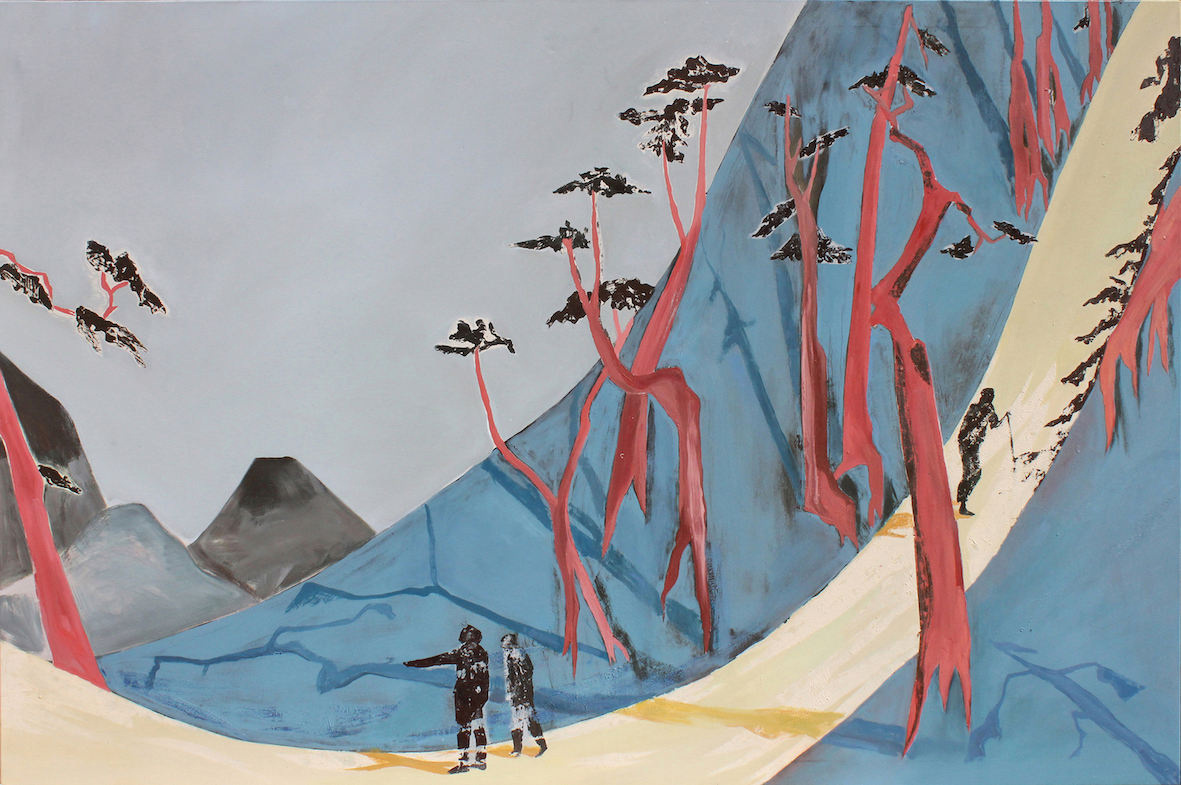Ana is a painter from Zagreb. Besides painting, she expresses herself through drawing, sewing and embroidery. She enjoys watching the seas and the rivers, her son growing, the fire playing, and people changing. Music and movement make her happy, as well as retelling dreams and discovering new things.
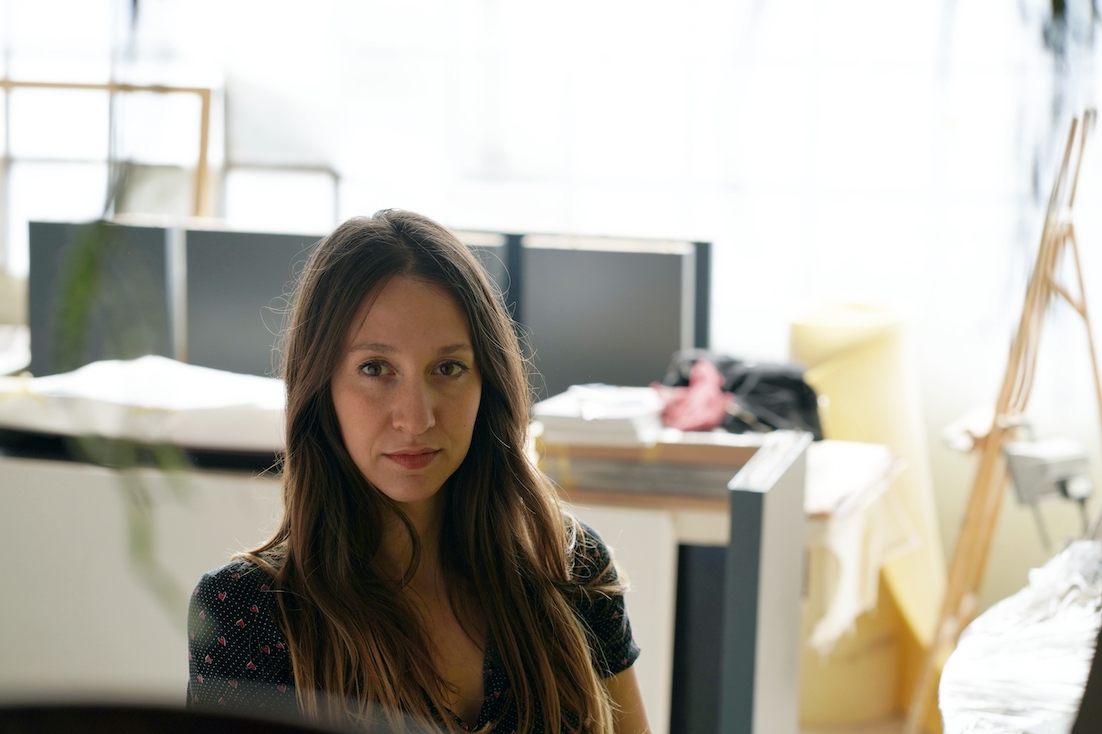
You worked on the Mountains series for a couple of years. Why mountains as a motif?
The Mountains were a spontaneous continuation of my graduate work A Dedication to Hiroshige, which was dedicated to the master of Japanese wood carving. Through that cycle, I realized for the first time how nature itself can be a worthy motif for painting. The mountain tops are places of silence, introspection and peace. They are holy places in all cultures.
In your first phase of work, you were inspired by the Japanese artist Hiroshige. Tell me more about him and what attracted you to his work. njegovom radu.
Hiroshige was a master woodcarver from the first half of the XIXth century and the last great master of ukiyo-e art. He traveled through Japan and made wood-carvings. His works are a kind of picture travelogue, and they are characterized by incredible fineness of colors and composition. They impress the observers as they are very gentle and meticulous, which is a real accomplishment given the fact that it is done by wood carving technique. I stumbled upon his monograph and the perfect compositions and harmony of colors immediately caught my attention.
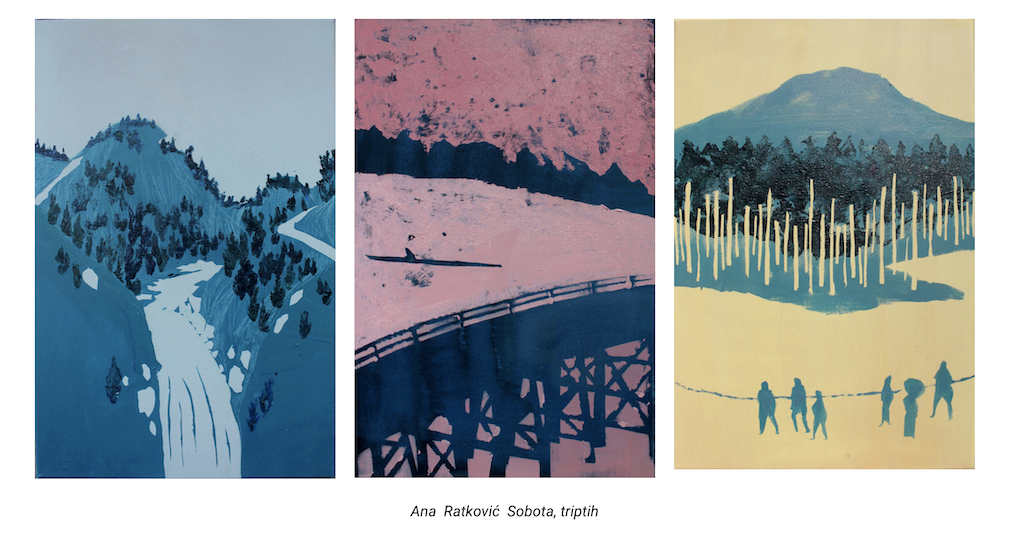
You also had the opportunity to exhibit in Japan. How did that experience affect you?
Japan is hard to describe in a few words, sometimes I felt like I was on another planet. Above all, one feels very safe there. People are kind and willing to help even though they don’t speak English. Those few signs in the city written in English were misspelled. When we would leave the restaurant, the whole staff would come out of the kitchen to say good-bye. A lot of people ride bikes. There are very few bike paths, but no one curses anyone like in Zagreb. They are generally very calm. There are simply no trash cans, people take the garbage home, recycle it, and the cities are very clean.
When visiting a zen garden the most normal thing one can see is a gardener taking care of an already perfect meadow. They do it with such dedication and love that I often wished to stay there and become a gardener.
I noticed that travelling and the change of environment have a very stimulating effect on me, that’s why I like to travel. It’s too easy to get into a routine and get used to your city, its energy and everyday collective lamentation. Only when I would return from a trip would I realize how beautiful the city and the country I live in really are. Every little change in routine makes life more interesting and fresh.
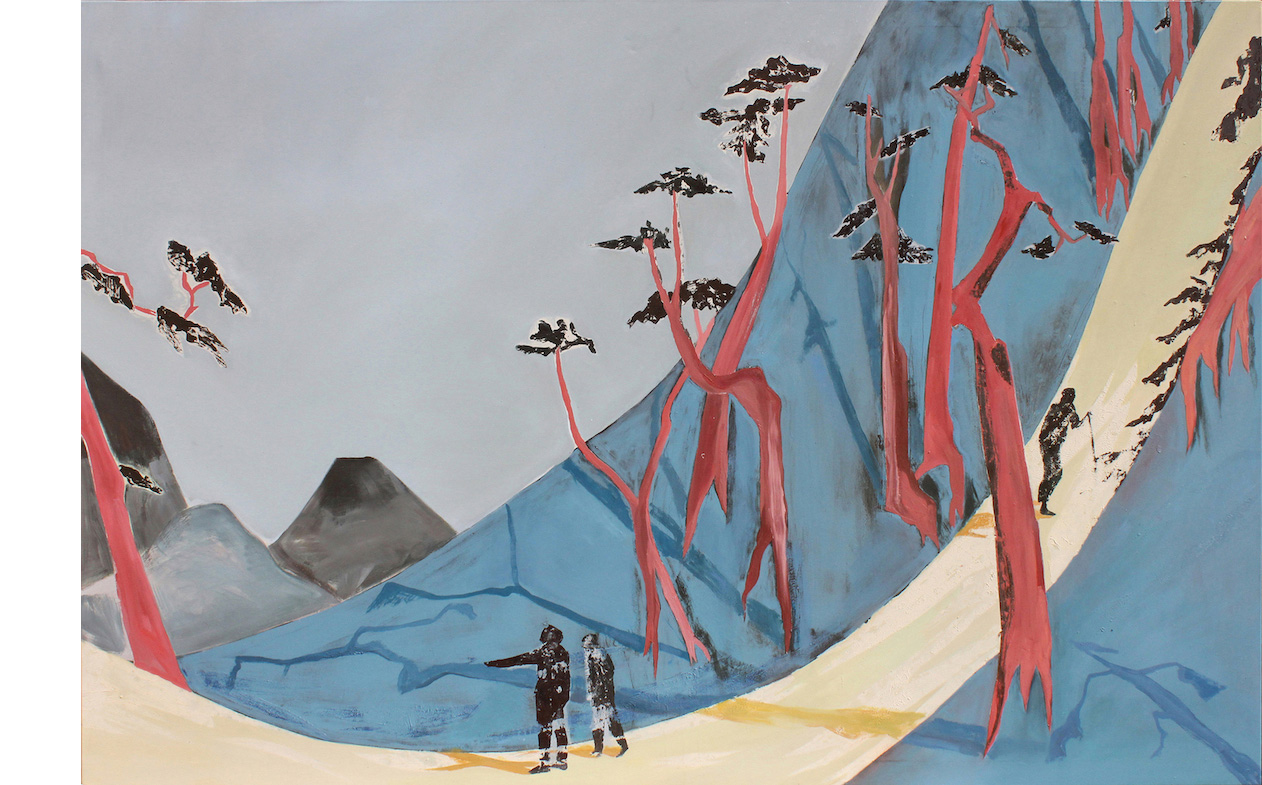
Would you single out some places in Zagreb that mean a lot to you as an artist?
After the earthquake, I thought about how my city was an indispensable part of me, because I tied each of my memories to a place. My first studio was in Medika, one of the few squats in Zagreb. Concerts, exhibitions, and festivals often happened there. That place left a huge mark on me in my younger days, as well as my department at the Academy. The teaching department is located at Jabukovac, a hill above the center of Zagreb, and for a while it was literally my second home. The exhibition in Lauba meant a lot to me, and even before the exhibition I considered it the most beautiful exhibition place in Zagreb. I regularly visit the exhibitions in the Studentski Centar gallery, which was unfortunately destroyed in the earthquake. Of course, there is the Meštrović’s pavilion or The mosque, as people of Zagreb call it, which means a lot to all artists.
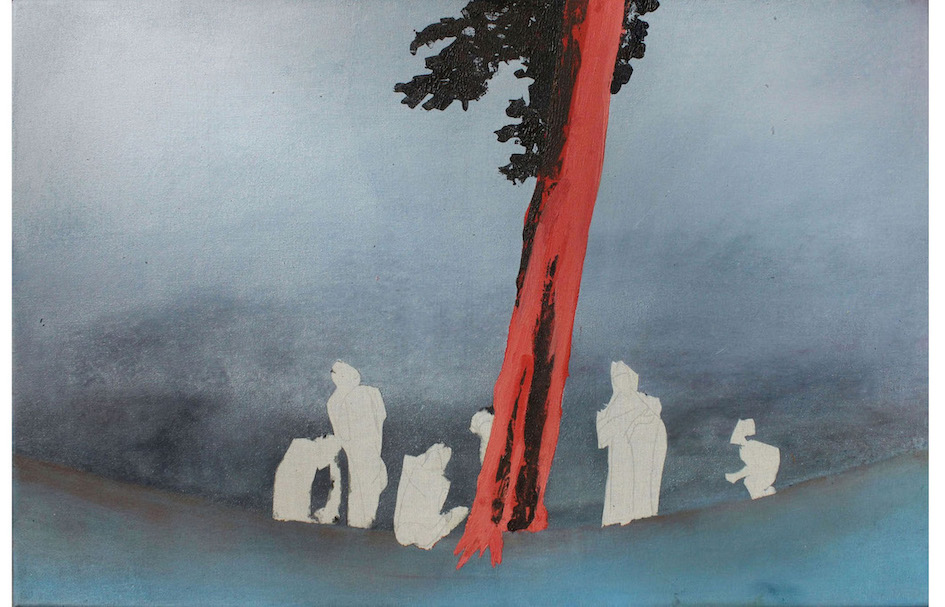
After Mountains you exhibited works from the new series called Forests in Lauba. What is good or bad about working in cycles?
When I work on an art cycle I am calm because I am aware that in the coming months I have time to express everything I want without pressure.
But when you exhibit the works, the pressure to start something new immediately comes after it. Sometimes people ask me during the opening when I will make the next exhibition. That sounds to me like coming to a concert where the band promotes a new album and in the middle of the song you ask them when they will record a new one. But that’s another indication of what a hectic time we live in. Something you have been doing for months gets consumed in a minute or a second by looking on the cell phone screen and people just move on.
The painting represents you in the time period of making it. Sometimes you come to the studio overjoyed and everything is clear to you, and sometimes you doubt the whole thing you work on and nothing makes sense. The best works I did, I painted them quickly, without over-calculating. It was as if it came out of my mind simply and easily.
When I worked on the Forests series, the most important thing for me was to produce a certain sense of peace in the observer, identical to the one we get when being in nature. Maybe the plan was to encourage people to pay more attention next time they look at something they take for granted. Fromm said that love for someone or something equals the attention or care we dedicate to it. Painting is often just a long-term observation, paying attention and love to what you do. I wanted the observers to feel something similar.
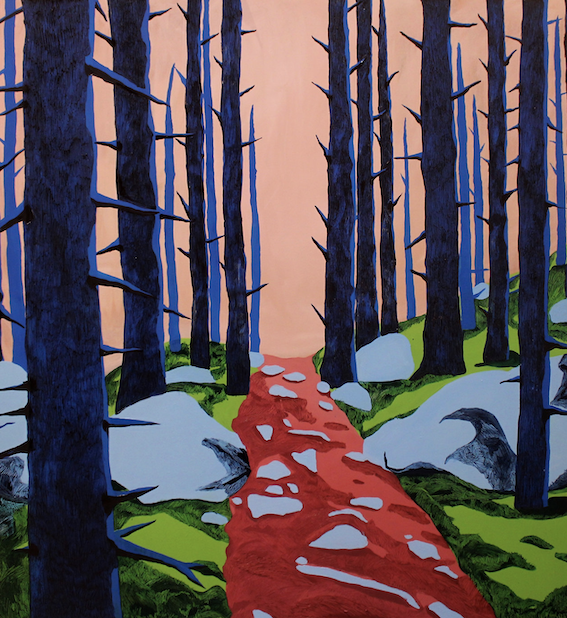
In your works, the lines are sometimes scratched or imprinted… How much does working on textures mean to you?
Working on the texture is what makes a painting. When creating Forests, I would coat the canvas with a lighter color tone and then apply a thick layer of darker colors and incise lines and dots into the surface. Now on this new cycle I outline the composition, cut out huge sheets of paper, apply paint to them, and print it on canvas. I do a big monotype, a picture in a graphic way. I work a lot with the adhesive tape that helps me insulate certain parts of the painting and protect it from overlapping colors. In that way, I get sharp and clean transitions between surfaces. While painting, I often repeat mechanical moves of scratching and I completely lose track of time. While working on some cycles, I would spend longer periods of time alone in the studio, sometimes from the morning until the evening. I would forget the sound of my voice. I have a wood stove in the studio so during winter, every now and then, I would stop and start the fire, warm my hands, and observe the flames for who knows how long. I think painting is a kind of meditation, if we understand meditation as a journey into our essence, i.e. the condition where we manage to step out from our thoughts and simply be present in the moment.
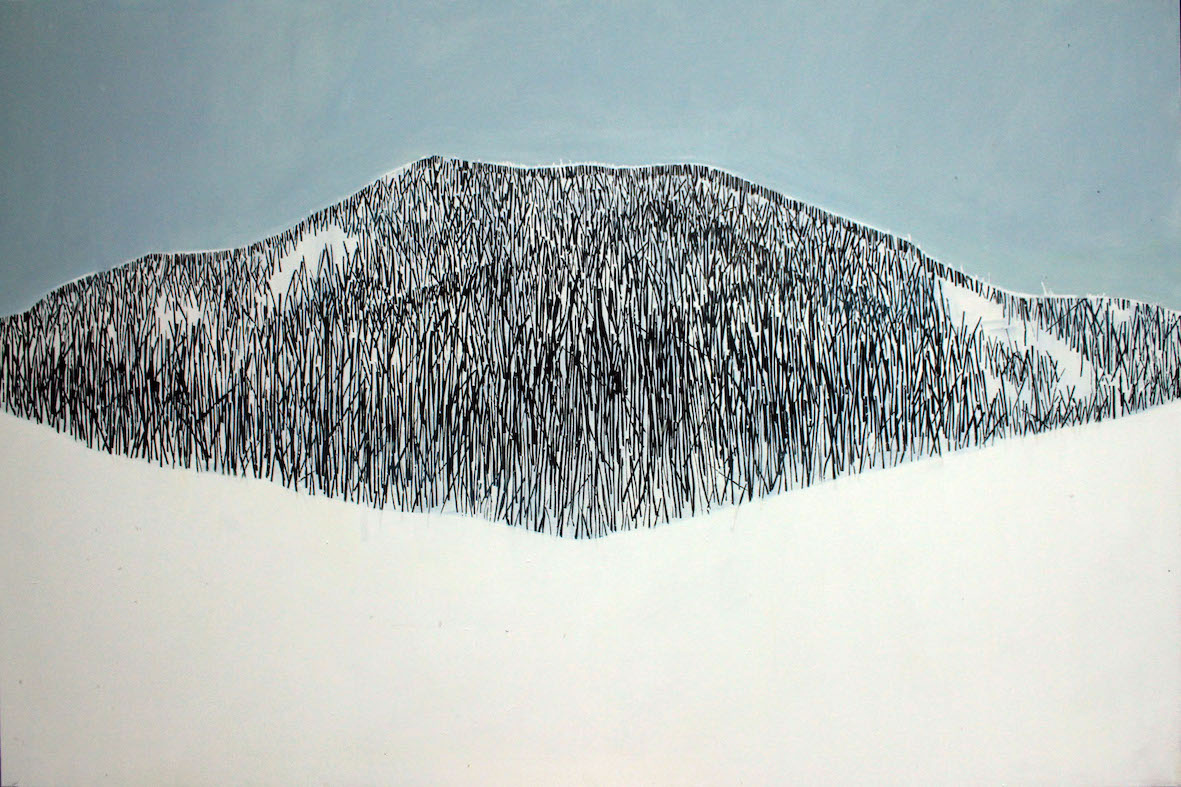
In addition to painting, you also do embroidery?
Weaving and embroidery are meditative, slow processes, with a long history. It is interesting to me to explore painting in that direction, from folk embroidery to the art of Anni Albers, and some approximate goal is to explore the traditional bindings from our areas. Last year I started reading about and researching Old Slavic mythology and customs. In the future, I would love to start some cycles inspired by that knowledge.
